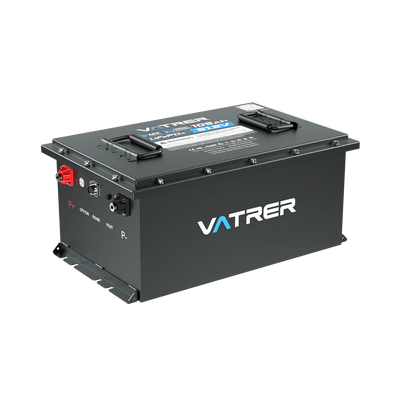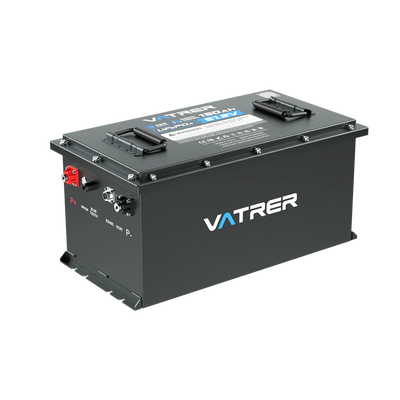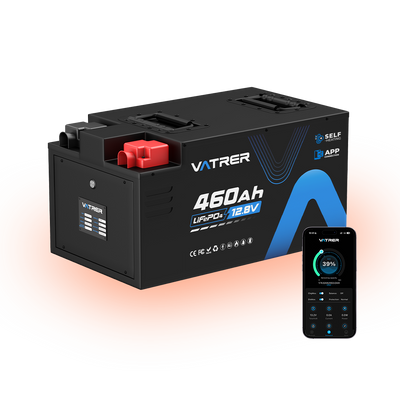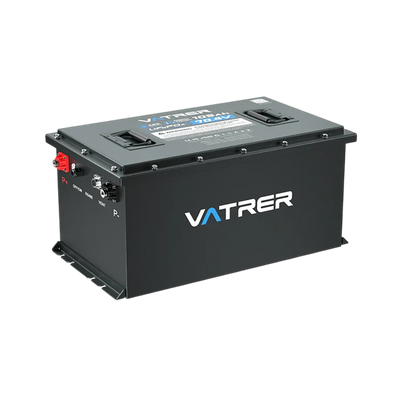
How Long Do Golf Cart Batteries Last On One Charge
Imagine cruising through the 17th hole on a beautiful afternoon, only to hear your golf cart slow to a crawl. Whether you're an avid golfer, a resort fleet manager, or a retiree enjoying community rides, the distance your golf cart can travel on a single charge can make or break your experience.
Understanding how long golf cart batteries last on one charge isn’t just about convenience, it’s about reliability, cost-efficiency, and smart long-term ownership. In this guide, we’ll walk you through real-world performance, the factors that influence range, and expert-backed ways to get the most out of your battery.

Average Distance Per Full Charge: A Comparison by Golf Cart Battery Type
The number of miles (or holes of golf) your cart covers on a full charge depends primarily on the battery type. Let's compare the two most common types:
| Battery Type | Range on One Charge | Run Time Estimate | Maintenance Needs | Average Lifespan |
|---|---|---|---|---|
| Lead-Acid Batteries | 15–25 miles | 2–3 hours | High (check water levels, clean terminals) | 4–6 years |
| Lithium Golf Cart Batteries | 30–40+ miles | 4–5+ hours | Low (maintenance-free) | 8–10+ years (or more) |
Tip: A lithium battery, such as the Vatrer 48V 105Ah, can give you up to 50 miles of range, perfect for extended drives or multiple rounds of golf.
Key Factors That Golf Cart Battery Impact How Far You Can Go
Even with the best golf cart battery, how far you can drive on a single charge isn't set in stone. Here are the top factors, including environment and habits, that play a role:
Terrain
- Flat golf courses require less energy, expect longer rides.
- Hilly terrain or frequent starts/stops drain batteries quickly.
Load and Accessories
- A cart carrying multiple passengers or gear uses more power.
- Add-ons like headlights, fans, or sound systems shorten the run time.
Driving Style
- Fast acceleration and high speeds burn through the charge faster.
- Smooth, steady driving helps conserve energy.
Temperature
- Both hot and cold weather can reduce battery life and range.
- Batteries prefer mild, stable temperatures when in use and while charging.
Understanding the Different Types of Golf Cart Batteries and How to Choose
Let's break down the most common types of golf cart batteries so you can choose wisely based on your usage:
- Flooded Lead-Acid (FLA): Affordable but high maintenance. Must check distilled water levels regularly.
- Absorbed Glass Mat (AGM): Sealed lead-acid with less upkeep, but still heavier and shorter lifespan than lithium.
- Lithium-Ion (LiFePO4): Lightweight, longer lifespan, minimal maintenance, and fast charging times, such as Vatrer golf cart lithium battery.
Note: While upfront cost is higher for lithium batteries, their longer life and consistent performance provide better long-term value.
Signs of Reduced Golf Cart Battery Life
If you notice your cart running out of juice sooner than usual, your battery might be past its prime. Look for:
- Decreased mileage on a full charge.
- Longer charging times than normal.
- Drop in top speed or sluggish starts.
- Needing to top off water more often (for lead-acid types).
- Bulging or warped battery cases.
Tip: These are clear signs your golf cart battery needs inspection or replacement.
Golf Cart Battery Maintenance Tips To Extend The Range On a Single Charge
Whether you use lead-acid or lithium golf cart batteries, proper battery maintenance boosts performance on each charge:
For All Battery Types
- Avoid deep discharges, charge when you reach 20-30% state of charge.
- Use the correct charger for your battery type.
- Store in cool, dry areas, heat accelerates battery wear.
For Lead-Acid
- Check water levels after charging, use distilled water only.
- Keep terminals clean to prevent power loss.
- Avoid overcharging, use a smart charger if possible.
For Lithium Battery
- Use BMS-equipped packs (like Vatrer's smart lithium batteries) to prevent overcharge or overheating.
- Avoiding complete discharge and starting charging when 20% of the battery remains can help extend longer lifespan.
How Long Does a Golf Cart Battery Need To Last To Be Considered "Long Enough"?
Here's how your battery choice plays out in everyday scenarios:
| Use Case | Ideal Battery Type | Range Needed | Notes |
|---|---|---|---|
| Weekend golfer (18–36 holes) | Lithium or Lead-Acid | 10–25 miles | Lead-acid may suffice, but lithium is smoother |
| Retirement community rider (daily use) | Lithium | 30–40+ miles | Longer-lasting and more reliable |
| Golf course/resort fleet | Lithium (low maintenance) | High mileage and uptime | Less downtime, longer battery life |
| Hilly or off-road terrain users | High-capacity lithium | ≥40 miles | Lightweight batteries improve efficiency |
When to Replace Your Golf Cart Battery: Avoid Range Anxiety
Even the best-maintained battery eventually declines. Here's when to plan for replacement:
- Lead-acid batteries: Around 4-6 years or 500-800 charge cycles.
- Lithium batteries: 8-10 years or 3000-5000 cycles, especially with Vatrer's LiFePO4 battery.
Pro Tip: Always replace batteries in sets to avoid imbalance. Mixed battery types or ages can reduce overall efficiency and easily damage the battery.
Make Every Charge Count with Vatrer Lithium Batteries
If you're seeking reliability, range, and smarter battery technology, Vatrer Battery offers cutting-edge lithium golf cart batteries like the 48V 105Ah LiFePO4 battery with a built-in 200A BMS and fast 58.4V 20A charging.
- Delivers up to 50 miles per charge.
- Built-in smart features for protection and efficiency.
- Up to 4000+ life cycles.
- Maintenance-free and 50% lighter than traditional batteries.
Whether you're upgrading an aging cart or planning a new purchase, Vatrer batteries help you go farther.
Smarter Batteries Mean Smoother Rides
So, how long do golf cart batteries last on one charge? The answer depends on battery chemistry, usage habits, and how well you take care of your power system.
Choosing the right battery, especially a high-performance lithium pack, and keeping it well-maintained gives you more miles, fewer interruptions, and a better driving experience. And when it's time to upgrade, investing in a trusted brand like Vatrer Battery ensures you get top-tier tech that pays off in the long run.
Ready to go the distance? Explore Vatrer lithium solutions designed for today's golf cart owners. Reliable. Efficient. Smart.
FAQs
How Do I Size A Battery For My Specific Golf Cart Usage?
Sizing starts with realistic daily use: estimate your average trip distance or hours in real operating conditions (including hills and accessories).
Convert that into an energy requirement using an estimated average draw (W) or typical current (A) for your cart, then add a safety reserve (typically 20-40%) and choose a usable Depth-of-Discharge (DoD) that matches the chemistry (like LiFePO4 often designed for higher usable DoD).
Finally, pick a pack whose rated capacity and voltage exceed that usable energy plus losses (charging/discharge inefficiencies). For fleets, size to the busiest day rather than the average day, so you avoid mid-shift downtime.
What Is The Best Golf Cart Charging Strategy For Fleet Operations?
A practical fleet charging strategy staggers charging so vehicles are never all idle at once: assign charging windows (post-shift and opportunistic midday charges), use smart chargers to top only when needed, and keep a small reserve pool for peak demand.
Track battery state-of-health centrally (BMS telemetry if possible) to prioritize replacements and rotate packs to even out wear. Consider dedicated charging bays equal to at least 20-30% of fleet size for surge days and document SOPs so attendants follow consistent charge/discharge habits.
How Should I Store Golf Cart Batteries For Longer Off-Season Periods?
For long storage, set lithium packs to roughly 40-60% state of charge and lead-acid packs to fully charged, then disconnect or use a float/maintenance charger as appropriate.
Store batteries in a cool, dry area, ideally between about 50°F and 77°F to slow self-discharge and aging; avoid freezing or hot attics.
Check the charge level every 6-8 weeks and recharge as needed to prevent deep discharge. Label stored packs with date and SOC to make recommissioning orderly.
Can I Retrofit My Old Golf Cart From Lead-Acid To Lithium?
Yes, many carts can be retrofitted, but it's not plug-and-play.
Key steps include matching pack voltage, ensuring the controller accepts the different voltage curve, installing a compatible charger and BMS, and physically securing lighter lithium modules in the bay.
Also verify vehicle grounding, fusing, and connectors. Have a qualified technician assess motor/controller limits and update any software or limiters, this avoids surprises like tripped protections or warranty loss.
What Safety Steps Should I Take When Transporting And Installing Batteries?
Always isolate and tape terminals, secure batteries to prevent shifting, and use non-conductive lift points or straps.
Wear eye and hand protection during handling, carry a Class D dry powder fire extinguisher if moving multiple lithium packs, and never stack unsecured batteries.
For lithium packs, follow vendor transport prep (terminal covers, packaging) and coordinate with the carrier about hazardous-goods rules. If in doubt, have the vendor or a certified installer handle the lift and installation.
How Do I Troubleshoot A Golf Cart Battery That Charges But Loses Power Quickly?
Start with simple checks: confirm charger voltage and current, verify terminal tightness and corrosion, and look for parasitic drains (lights, accessories left on).
Then measure the open-circuit voltage and the loaded voltage drop. If voltage sags dramatically under modest load, it suggests internal resistance rise or failing cells. If the pack has BMS logs, review charge acceptance and error codes.
If tests point to internal degradation, plan for replacement, partial fixes often buy only short-term reliability.
Share






























































































